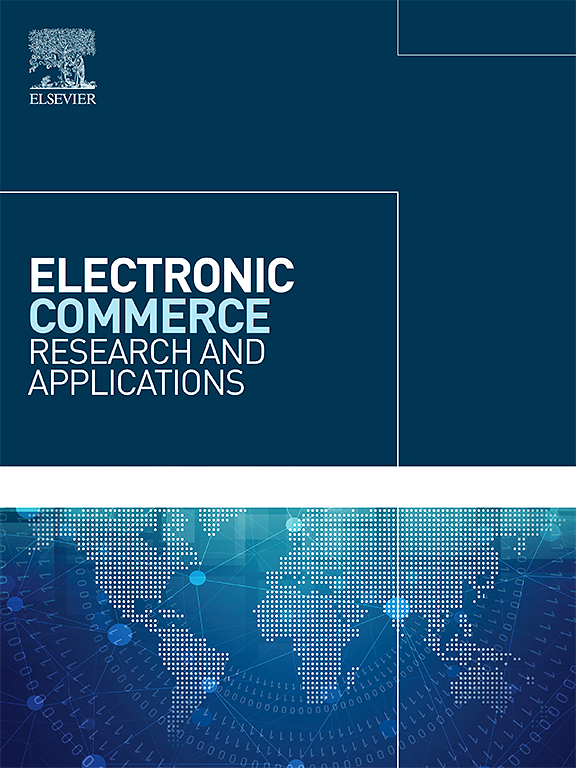政府补贴下的碳减排和渠道发展战略与零售商的公平关切
IF 5.9
3区 管理学
Q1 BUSINESS
Electronic Commerce Research and Applications
Pub Date : 2024-09-05
DOI:10.1016/j.elerap.2024.101447
引用次数: 0
摘要
为应对全球气候变化的挑战,各国政府纷纷制定低碳补贴政策,以促进低碳发展。政府通常会对制造商的碳减排量(CER)进行补贴,但可能会引起零售商的公平性担忧。考虑到这种情况,我们在本文中模拟了政府低碳补贴政策下由制造商和零售商组成的双层双渠道供应链。我们采用博弈论的方法分析了 LCSP、在线渠道份额和零售商公平性担忧之间的内部关系。此外,我们还讨论了制造商和零售商发展网络渠道的动机。我们发现,无论渠道结构如何,增加补贴并不能减轻零售商的公平担忧对供应链的负面影响。至于拓展网络渠道能否降低零售商的公平担忧对供应链的负面影响,则取决于渠道结构和碳系数。通过比较模型,我们发现制造商或零售商发展网络渠道可以提高CER,其中模型M的CER最高,为制造商带来了高额利润。零售商开发在线渠道是否会损害制造商的利润,取决于在线渠道份额的大小。我们的研究结果为供应链参与者在面对政府补贴和公平性问题时制定最优碳排放和渠道发展策略提供了指导。本文章由计算机程序翻译,如有差异,请以英文原文为准。
Carbon emission reduction and channel development strategies under government subsidy and retailers’ fairness concerns
In response to the global challenge of climate change, governments have formulated low-carbon subsidy policies (LCSPs) to promote low-carbon development. Governments commonly subsidize manufacturers’ carbon emission reduction (CER) but may incur retailers’ fairness concerns. Considering this situation, in this paper, we model a two-level dual-channel supply chain consisting of a manufacturer and a retailer under the government’s LCSPs. We use a game theoretical approach to analyze the internal relationship between LCSPs, online channel share, and retailer’s fairness concerns. Further, we discuss the incentives for manufacturers and retailers to develop online channels. We find that regardless of the channel structure, increasing subsidies does not mitigate the negative impact of retailers’ fairness concerns on the supply chain. Whether expanding online channels can reduce the negative effect of retailers’ fairness concerns on the supply chain depends on both the channel structure and the carbon coefficient. By comparing models, we find that manufacturers or retailers developing online channels can improve CER, with the highest CER achieved in Model M, generating high profits for manufacturers. Whether retailers developing online channels will harm manufacturers’ profit depends on the size of the online channel share. The findings of our study provide a guide for supply chain participants to make the optimal carbon emission and channel development strategies when facing government subsidies and having fairness concerns.
求助全文
通过发布文献求助,成功后即可免费获取论文全文。
去求助
来源期刊

Electronic Commerce Research and Applications
工程技术-计算机:跨学科应用
CiteScore
10.10
自引率
8.30%
发文量
97
审稿时长
63 days
期刊介绍:
Electronic Commerce Research and Applications aims to create and disseminate enduring knowledge for the fast-changing e-commerce environment. A major dilemma in e-commerce research is how to achieve a balance between the currency and the life span of knowledge.
Electronic Commerce Research and Applications will contribute to the establishment of a research community to create the knowledge, technology, theory, and applications for the development of electronic commerce. This is targeted at the intersection of technological potential and business aims.
 求助内容:
求助内容: 应助结果提醒方式:
应助结果提醒方式:


